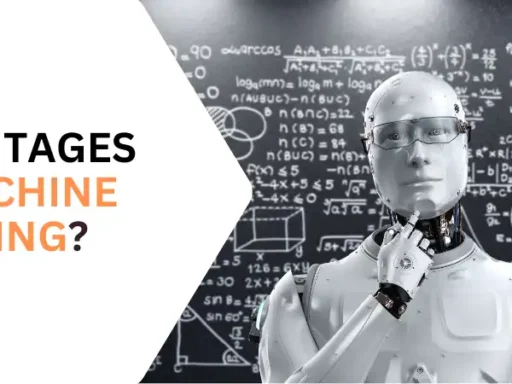In the realm of artificial intelligence (AI) and machine learning (ML), the terms CNN and computer vision are often discussed, but they are not synonymous. Is CNN A Computer Vision?
This guide aims to clarify what CNN is, its relationship to computer vision, and how these concepts interrelate. We will explore their definitions, functionalities, and implications in modern technology.
CNN
CNN stands for Convolutional Neural Network. It is a specialized type of artificial neural network designed primarily for processing structured grid data, such as images. CNNs are particularly well-suited for image recognition, classification, and processing due to their ability to capture spatial hierarchies in images.
Components of CNN
-
Convolutional Layers
These layers apply convolutional filters to the input data. Filters slide over the image to detect features like edges, textures, and patterns. The output of this process is a feature map.
-
Activation Functions
Typically, ReLU (Rectified Linear Unit) is used as an activation function. It introduces non-linearity to the model, enabling it to learn complex patterns.
-
Pooling Layers
Pooling layers reduce the spatial dimensions of the feature maps, which decreases the computational load and helps in making the network invariant to small translations in the input.
-
Fully Connected Layers
After the feature extraction, fully connected layers classify the extracted features into categories or labels.
-
Normalization Layers
These layers, like Batch Normalization, help in stabilizing and accelerating the training process by normalizing the output of previous layers.
How CNNs Work
CNNs operate by passing an input image through multiple layers of convolutions, activation functions, and pooling operations. Each convolutional layer detects different features, from simple edges in the initial layers to complex shapes and objects in deeper layers. This hierarchical feature extraction is what makes CNNs so effective for image-related tasks.
Computer Vision
What is Computer Vision?
Computer vision is a field of AI that enables machines to interpret and make decisions based on visual inputs from the world. It aims to mimic human vision capabilities, such as recognizing objects, understanding scenes, and making sense of visual data.
Key Concepts in Computer Vision
-
Image Classification
Assigning a label to an image based on its content. For example, identifying whether an image contains a cat or a dog.
-
Object Detection
Identifying and localizing objects within an image. This involves drawing bounding boxes around detected objects.
-
Image Segmentation
Dividing an image into segments or regions, often for identifying and classifying individual objects or areas.
-
Feature Extraction
Identifying important features from an image that can be used for further analysis or classification.
-
Image Generation
Creating new images based on learned patterns from existing data. Techniques such as Generative Adversarial Networks (GANs) are often used for this purpose.
Applications of Computer Vision
-
Autonomous Vehicles
Recognizing and interpreting road signs, pedestrians, and other vehicles.
-
Medical Imaging
Analyzing X-rays, MRIs, and other medical images to diagnose diseases.
-
Facial Recognition
Identifying or verifying individuals based on their facial features.
-
Retail
Managing inventory, tracking consumer behavior, and enhancing the shopping experience.
Relationship Between CNN and Computer Vision
CNN as a Tool for Computer Vision
CNNs are a crucial tool within the field of computer vision. They are not computer vision themselves but are widely used to solve various computer vision tasks. The strength of CNNs lies in their ability to automatically learn and extract features from images, which is a fundamental requirement for most computer vision applications.
How CNNs Enhance Computer Vision
-
Feature Learning
Traditional computer vision methods often required manual feature extraction. CNNs, however, automatically learn and extract relevant features from images, making the process more efficient and effective.
-
Improved Accuracy
CNNs have significantly improved the accuracy of image classification, object detection, and other computer vision tasks compared to previous methods.
-
End-to-End Training
CNNs allow for end-to-end training, meaning the model can learn from raw images directly and perform tasks like classification or detection without needing separate stages for feature extraction.
-
Adaptability
CNNs can be adapted for various tasks and domains by fine-tuning or transferring learning from one task to another, which is highly beneficial for computer vision applications.
Examples of CNNs in Computer Vision
Image Classification with CNN
One of the most common applications of CNNs is image classification. For instance, the AlexNet architecture, which won the ImageNet competition in 2012, demonstrated the power of CNNs in classifying images into thousands of categories.
Object Detection with CNN
The YOLO (You Only Look Once) architecture and Faster R-CNN are examples of CNN-based models used for object detection. They can identify and localize multiple objects within an image, which is crucial for tasks like autonomous driving.
Image Segmentation with CNN
Semantic segmentation models like U-Net and DeepLab use CNNs to partition images into meaningful segments. These models are used in medical imaging, where precise segmentation is critical for diagnosing conditions.
You Might Be Interested In
- How Much Power Does A Robot Vacuum Use?
- What Is A 3 Layer Neural Network?
- Which Algorithm Is Better Than Genetic Algorithm?
- What Are 5 Different Types Of Robots?
- What Are The Functions Of An Expert System?
Conclusion
In summary, CNN is not a computer vision but a powerful tool used extensively within the field of computer vision. CNNs have revolutionized how visual data is processed, making them integral to modern computer vision applications.
Their ability to learn features from images automatically and improve accuracy in tasks such as classification, detection, and segmentation underscores their importance in advancing computer vision technology.
CNNs contribute significantly to the evolution of computer vision by enabling more sophisticated and accurate interpretation of visual data. As technology progresses, the synergy between CNNs and computer vision will likely continue to drive innovations and improve various applications ranging from autonomous vehicles to medical imaging.
FAQs about Cnn A Computer Vision?
What is CNN?
CNN, or Convolutional Neural Network, is a type of artificial neural network designed specifically to handle structured grid data, most commonly images. The architecture of CNNs is inspired by the visual processing mechanisms of the human brain.
They excel at recognizing patterns and features in visual data by employing convolutional layers that apply various filters to the input. These filters help in detecting essential features such as edges, textures, and shapes, which are critical for tasks like image classification and object detection. CNNs also use pooling layers to reduce the dimensionality of feature maps, making the processing more efficient and less susceptible to variations in the input data.
In essence, CNNs work by passing an image through several layers of convolutions, activations, and pooling operations. Each convolutional layer extracts increasingly complex features from the image, starting with simple edges and progressing to more intricate patterns in deeper layers.
After feature extraction, fully connected layers are used to classify these features into categories or labels. This hierarchical approach to feature learning and classification makes CNNs exceptionally powerful for a wide range of image-related tasks.
What is Computer Vision?
Computer vision is a multidisciplinary field that combines elements of computer science, mathematics, and cognitive science to enable machines to interpret and understand visual information from the world. The goal of computer vision is to mimic human visual capabilities, such as object recognition, scene understanding, and image interpretation
. This field encompasses various tasks, including image classification, object detection, image segmentation, and feature extraction. Each of these tasks involves analyzing visual data to make sense of the information contained within images or videos.
The applications of computer vision are vast and diverse. In autonomous vehicles, computer vision systems interpret road signs, detect pedestrians, and recognize other vehicles to navigate safely. In the medical field, computer vision is used to analyze medical images like X-rays and MRIs to assist in diagnosing diseases.
Retailers use computer vision for inventory management and tracking consumer behavior. Facial recognition systems, which rely on computer vision, are used for security and identification purposes. These applications highlight the critical role computer vision plays in transforming how we interact with and interpret visual data.
How do CNNs enhance Computer Vision?
CNNs significantly enhance computer vision by providing a powerful tool for automated feature extraction and pattern recognition. Before the advent of CNNs, computer vision tasks often required manual feature extraction, where engineers designed specific algorithms to identify features like edges or textures.
CNNs, however, automate this process by learning features directly from raw image data. This ability to automatically learn and extract relevant features simplifies the development of computer vision models and improves their accuracy and efficiency.
Moreover, CNNs enable end-to-end training, allowing models to learn from input images and perform tasks such as classification or detection without needing separate stages for feature extraction. This streamlined approach results in more coherent and integrated models.
Additionally, CNNs can be adapted to various tasks and domains through transfer learning or fine-tuning, making them versatile and applicable across different computer vision applications. The advanced capabilities of CNNs contribute to their widespread use and effectiveness in addressing complex visual recognition and interpretation challenges.
What are some examples of CNNs in Computer Vision?
CNNs have been applied to numerous computer vision tasks, showcasing their versatility and effectiveness. For example, in image classification, CNNs have achieved remarkable success with architectures like AlexNet, which won the ImageNet competition in 2012 by significantly improving accuracy in classifying images into various categories.
This success demonstrated the power of CNNs in handling large-scale image classification tasks and set a new standard for performance in the field.
In object detection, CNN-based models such as YOLO (You Only Look Once) and Faster R-CNN have made significant advancements. YOLO is known for its speed and accuracy in detecting and localizing multiple objects within an image in real-time, making it ideal for applications like autonomous driving.
Faster R-CNN, on the other hand, provides high-quality object detection by integrating region proposal networks with CNNs. For image segmentation, models like U-Net and DeepLab use CNNs to partition images into meaningful segments, which is crucial for tasks that require precise delineation of objects, such as in medical imaging or scene analysis.
How does CNN contribute to modern technology?
CNNs contribute significantly to modern technology by driving advancements in various applications that rely on visual data. In the field of autonomous vehicles, CNNs are integral to the development of systems that interpret road scenes, recognize obstacles, and make real-time driving decisions. Their ability to analyze and understand visual data from cameras and sensors enhances the safety and functionality of self-driving cars.
In medical imaging, CNNs assist in diagnosing diseases by analyzing X-rays, MRIs, and CT scans with high accuracy. They can detect abnormalities and patterns that might be missed by human eyes, leading to more accurate and timely diagnoses.
Additionally, CNNs are used in facial recognition systems for security and authentication, as well as in retail for managing inventory and enhancing customer experiences. The versatility and power of CNNs have made them a cornerstone of modern AI applications, driving innovation across multiple industries and improving the way we interact with and understand visual information.




